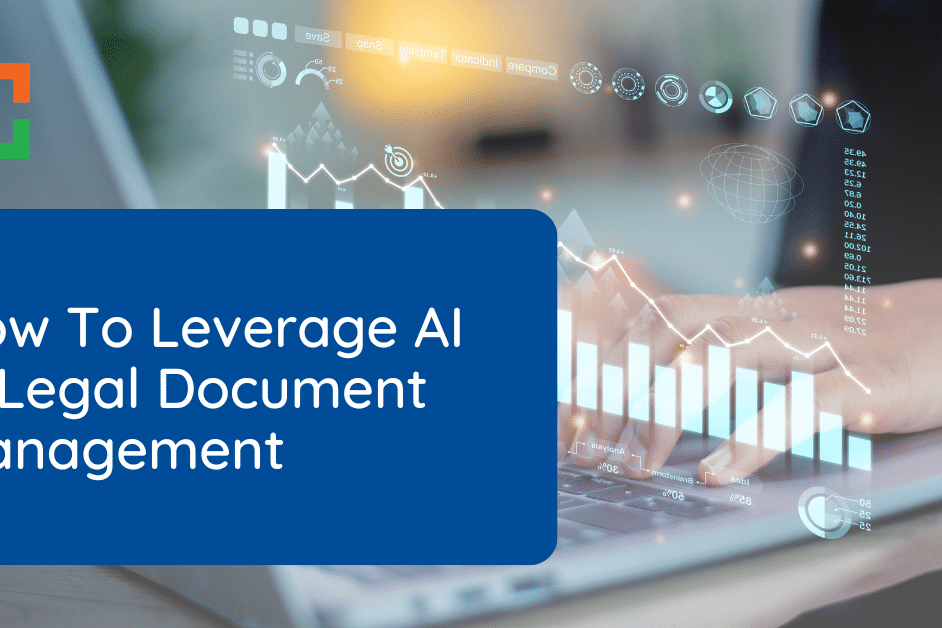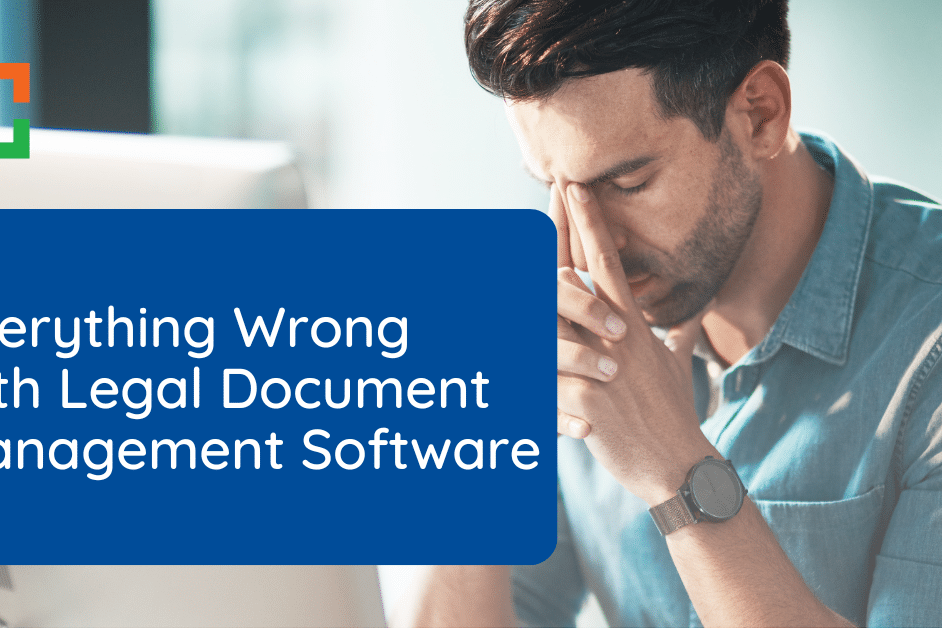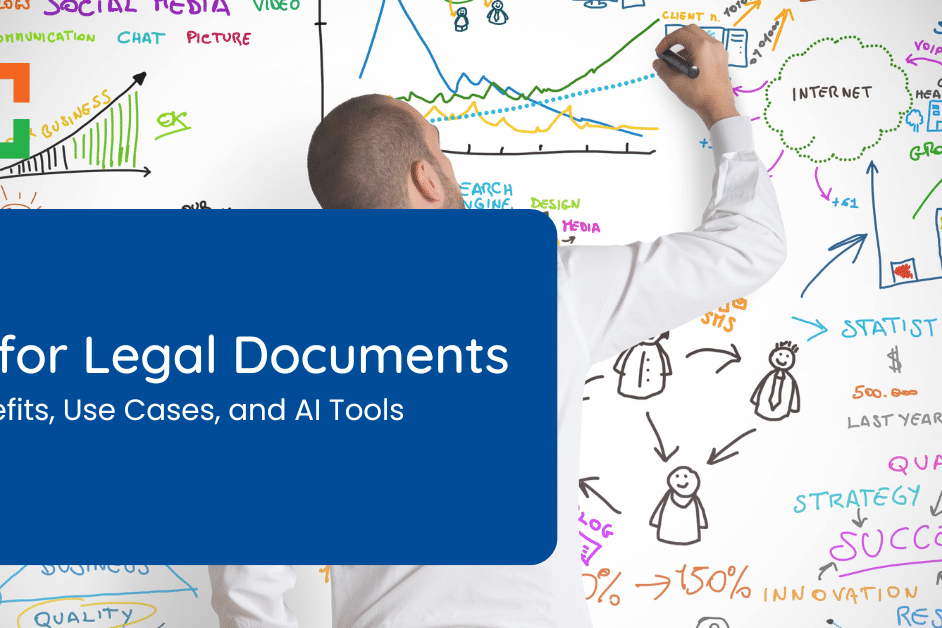Is Your Legal Document Management Software a Dinosaur?
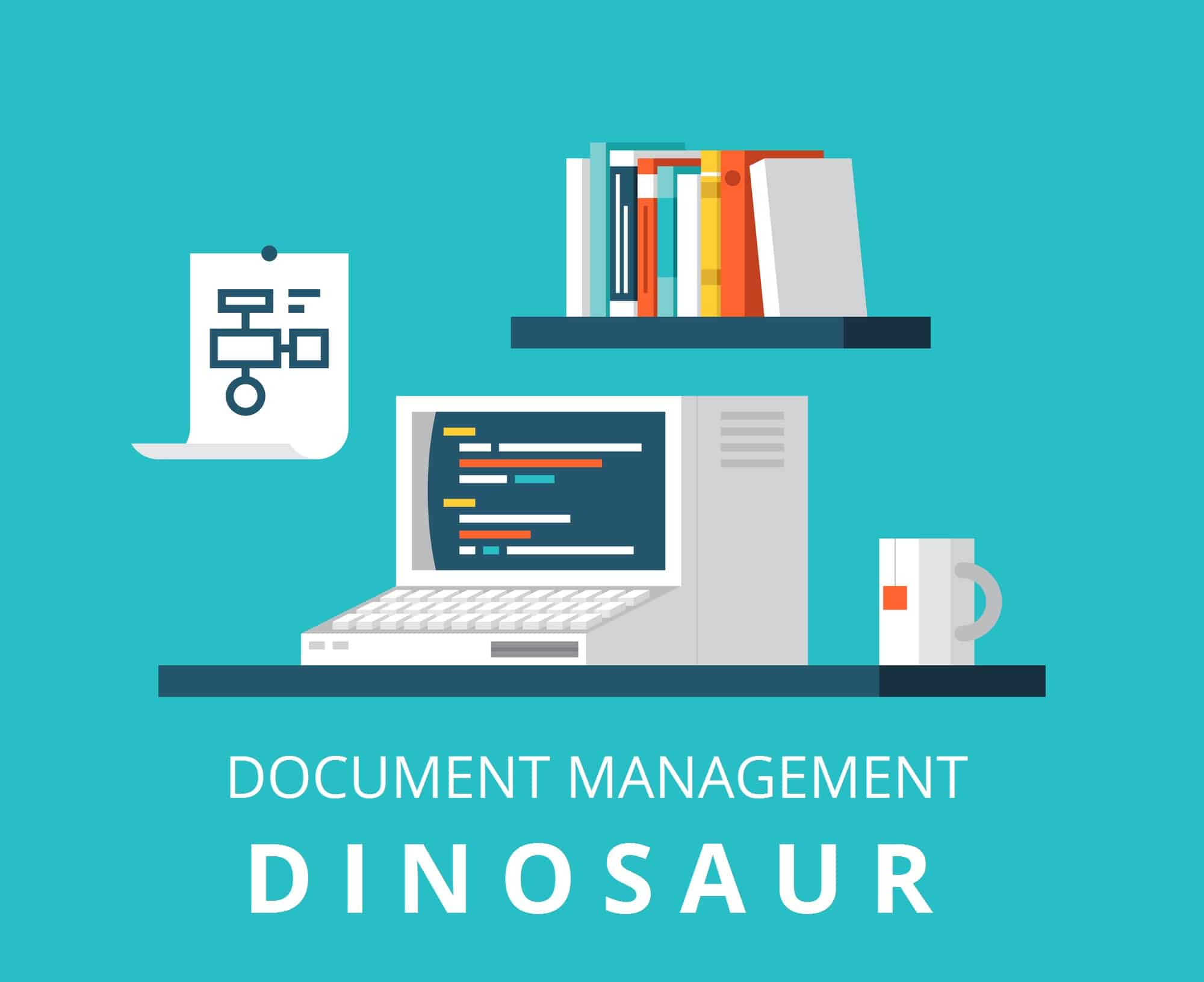
How to know if your legal document management software is a dinosaur–and what to do about it.
Legal Document Management software has been around a long time. Law firms have been using legal document management software for years to keep their firm and matter documents organized, searchable and categorized.
Unfortunately, the years have not been kind to some legal document management software.
I remember working with law firms and their document management software a decade ago. As I look at some of those same Document Management Systems today, I’m blown away by how little they’ve changed or evolved in that time.
Is your Document Management System a dinosaur?
You’re not a alone–but fear not: In this article we’ll explore some of the pitfalls of an outdated DMS, the benefits of modern legal document management software and some resources to find a DMS that will serve your firm well.
Legal Document Management Software – A Primer
First: Why do law firms use Document Management Systems in the first place?
In short, as law firms grow beyond solo practices and very small firms, they often need a better way to keep their documents organized and manageable than a simple folder structure. They need:
- The ability to see, restore and compare previous document versions.
- The ability to quickly search, and find phrases or keywords anywhere in a document.
- The ability to check documents out for extended periods of time and prevent other users from making edits.
- The ability to categorize (profile) and apply tags to documents (such as Pleading, or Urgent).
- The ability to easily and consistently OCR scanned documents.
- The ability to save, manage and search email.
On-premise file servers with basic folders (IE: “the G: drive”) can’t do all that. Even modern cloud-based storage like Dropbox or Google drive doesn’t do that. (We’re not picking on cloud storage services. They just simply never set out to be legal document management software.)
Related: Document Management vs. Consumer-grade Cloud Storage
So to address these needs, and keep their documents organized for the whole firm, law firms look to legal document management software.
Dinosaur DMS’s
Over a decade ago, law firms the world over were faced with the challenge of keeping documents organized, searchable and categorized.
Legal document management software to the rescue!
The problem: Fast forward to today, and many well-known document management apps haven’t kept up with the times.
Many of them:
- Require an expensive, on-site server (which is costly and requires expensive maintenance).
- Look and work like they were made in the 90’s (many of them were); they look dated and haven’t updated their interface in years.
- Require a specialist or consultant to setup and manage.
- Require software be installed at every server and desktop computer.
- Aren’t conducive to working remotely, away from the office.
- Lack current, present-day functionality.
Worse yet, some of our favorite legal document management software companies have been bought and sold by other companies–leaving their software and support in disarray.
If this sounds like your law firm’s legal document management software, I’m sorry, it’s probably a dinosaur. (It’s not your fault: it probably met the needs back when you bought it.)
And as some of these legal document management software publishers fail to keep their software up to date, the problem only gets worse every year.
Perhaps, its time to look at one of the modern document management solutions available to you.
Modern DMS’s
Fear not!
A new generation of modern legal document management software is available.
Most modern DMS’s are cloud-based, which means you can work from anywhere, and don’t need to spend a dollar on server infrastructure.
They typically have clean, intuitive interfaces which makes learning and using them easy.
Typically, modern legal document management software:
- Is cloud-based, and accessed in a web browser.
- Can be used from anywhere, on any device.
- Do not require special consultants to setup and manage.
- Do not require any software to be installed.
- Have a modern, clean interface.
- Are being updated with new functionality on a regular basis.
That last bullet is a major benefit of a cloud-based application that many people forget. Yes, working from anywhere and avoiding the headaches of servers is great.
But, generally speaking, cloud-based software is updated more often because it’s easier for the publisher to do it. When the developer wants to roll out new functionality, they can push it out to all of their current clients, and you–the user–doesn’t have to install, or do, anything.
That’s pretty cool.
And unlike dinosaur DMS’s that usually require you to buy the software in a perpetual license (read: $$$), most cloud-based software is provided on a monthly basis for a (comparatively) nominal fee.
Related: Best Legal Document Management Software
Closing the Loop
Is your legal document management software a dinosaur? If so, take a look at our Legal Document Management Comparison Chart and other resources to kick off your search for a suitable replacement for your law firm in the modern era.
Good luck!
Looking for Document Management Software?
LexWorkplace:
Modern Document Management for Law Firms
LexWorkplace is document & email management software, born in the cloud and built for law firms. Here’s a quick primer on how it works.
Organize by Client & Matter
Organize documents, email and notes by client or matter. Store and manage all data for a case or project in one place.
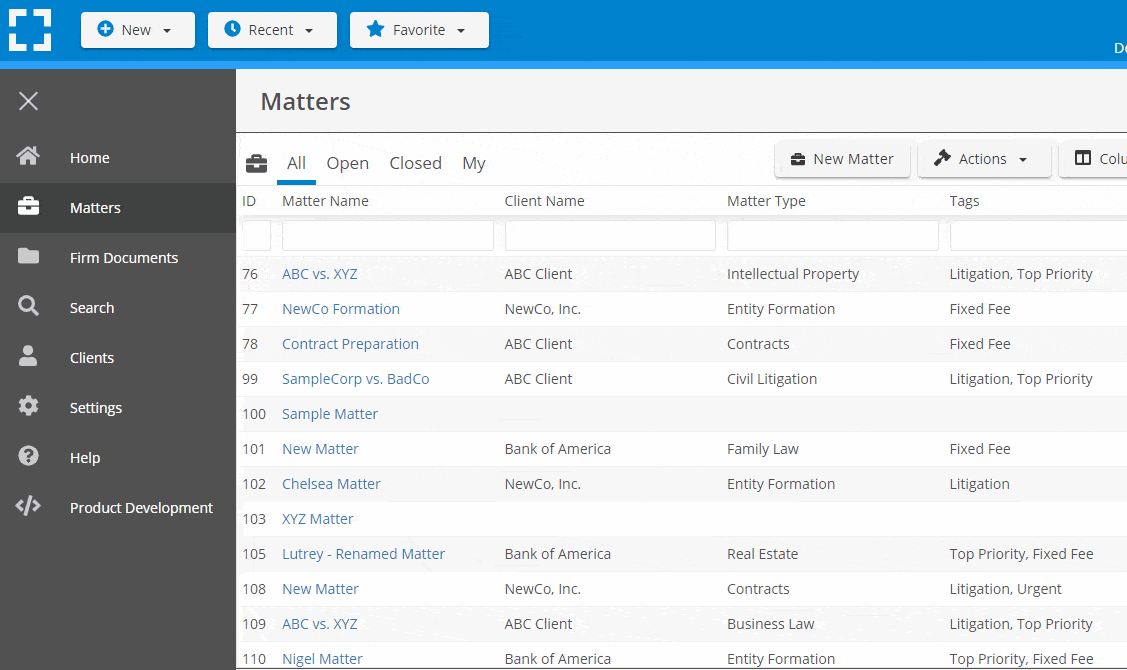
Go Beyond Basic Files & Folders
Supercharge your firm’s productivity with true DMS functions.
- Version Management
- Document Tagging & Profiling
- Document Check-Out / Check-In
- Microsoft Office Integration
- Automatic, Integrated OCR
- Convert Word Docs to PDF
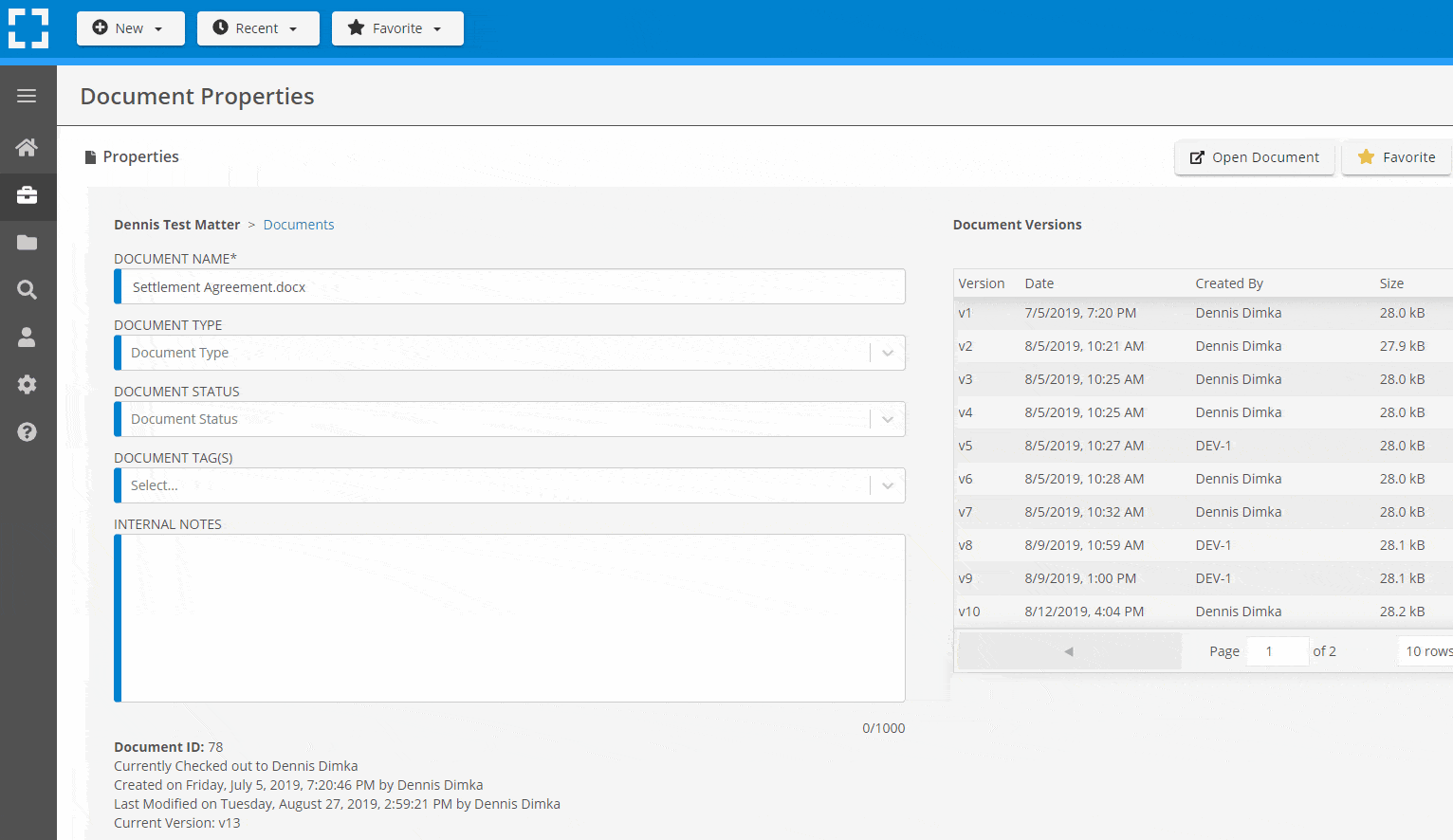
Search Everything
LexWorkplace is like Google for your law firm. Search across millions of pages, documents, folder email and notes in seconds. Refine your search by matter, document type, author and more.
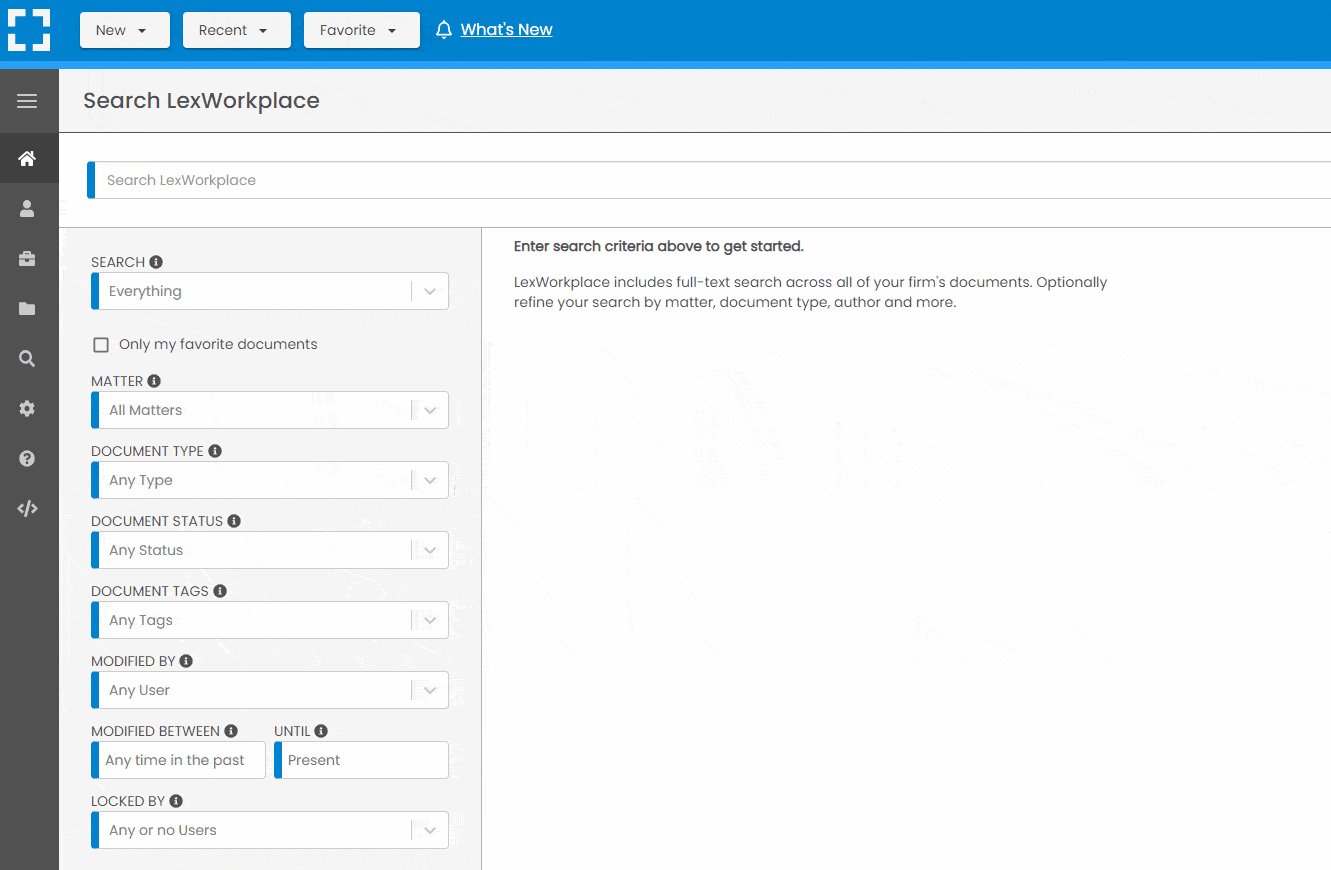
Search by…
- Client or Matter
- Document Type (Contract, Complaint, Order, etc.)
- Document Status (Draft, Final, etc.)
- Document Tags (Filed With Court, Fully Executed, etc.)
Outlook Integration + Comprehensive Email Management
Save emails to a matter without leaving Outlook. Saved emails are accessible to your entire team, organized and searchable.
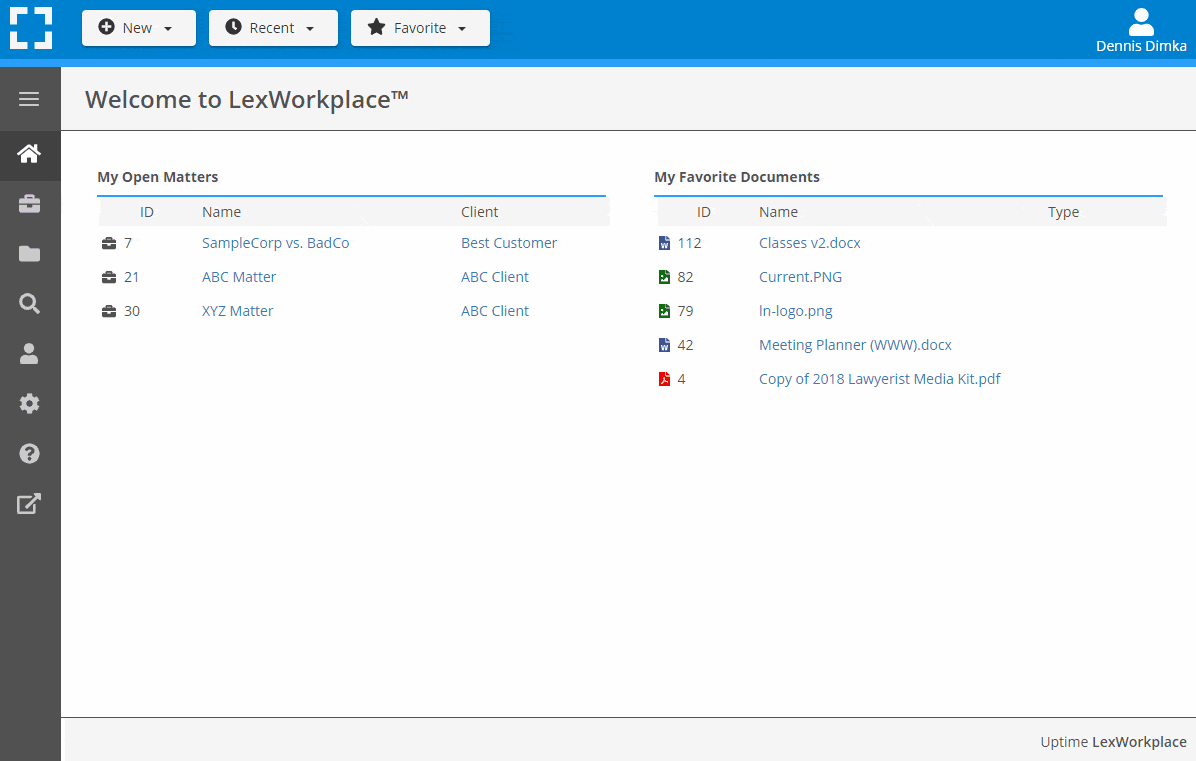
- Outlook Add-In that Works With Windows and Macs
- Save Entire, Original Email to a Matter in a LexWorkplace
- Email De-Duplication
- Organize Emails into Folders, Subfolders
Works with Windows and Macs
All of LexWorkplace is compatible with both Windows and Mac computers.
What Clients Say
Lawyers love LexWorkplace. See how the system streamlined one lawyer’s practice.
Watch the 5-Minute Demo
See LexWorkplace in action in our quick 5-minute overview and demonstration.
Or, if you want a one-on-one demo, or want to talk about LexWorkplace for your firm, schedule a call or demo below.
You Might Also Like
May 14, 2024
Everything Wrong with Legal Document Management Software
Legal document management software…
April 12, 2024
AI for Legal Documents: Benefits, Use Cases, and AI Tools
Discover how AI is changing legal…
Want More Legal Technology Tips?
Subscribe to Uptime Legal to get the latest legal tech tips and trends, delivered to your inbox weekly.
